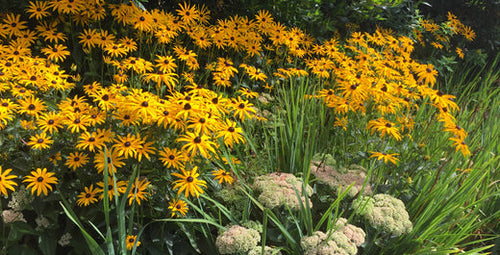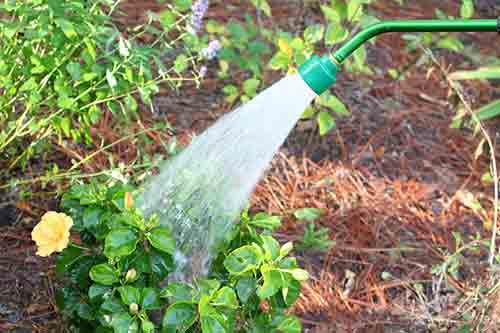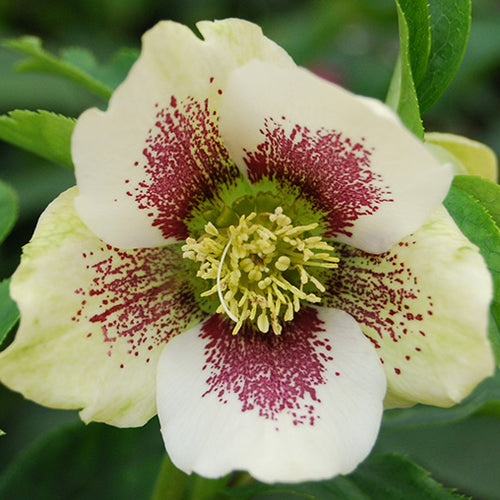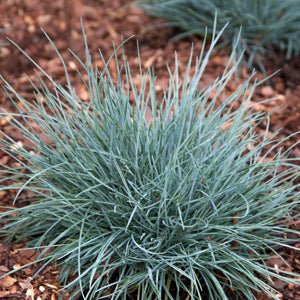By Karen Weir-Jimerson
Gardening is cross-training program where you and your yard get fitter. While gardening does wonders for your sense of calmness, psychological well being, and creativity, it also has measurable benefits when it comes to exercise.
According to the Centers for Disease Control,gardeningis considered moderate cardiovascularexercise.If you spend time in your garden, weeding, digging, planting, raking, hoeing, for 30 to 45 minutes a day, you can expect to increase your heart rate and burn 150 to 300 calories.
Loosen Up with Stretches
Just as you do at the gym before you launch into your exercise routine, it’s a good idea to do stretching exercises to get warmed up for a workout in the garden. Pulling weeds, lifting bags of mulch or stone, pruning shrubs or raking leaves involve areas of your body that may not be exerted in your daily exercise regime. This is especially true for overzealous spring gardeners who have spent a winter of couch hibernation binge-watching Game of Thrones. (Think of spring gardening as a marathon that you need to train for.)
gurus recommend a mix of movements to warm up before gardening activities: upward arm stretches that help lengthen and loosen the muscles in your shoulders and back, bends from the waist that help increase flexibility of the muscles in the backs of your legs, and lunges to improve motion in your hips.
Increase Your Workout
Pruning, digging, and turning over compost work the muscles in your arms, upper torso, core, and legs. If you want to get more of a work out, forego convenience tools. For example, pick up bags of mulch and carry them from your car to your garden instead of using a wheelbarrow. Use manual hedge pruners instead of electric ones to give your biceps a workout. And use a push mower instead of a rider or self-propelled one.
Count Your Steps
Use a step counter to measure the distance from your backdoor or garage to the end of your property, around your garden, and back again. This will give you an idea of how many steps you’ll get per day if you do a daily walk through/survey of your garden and landscaping. Even just 15 minutes of leisurely walking burns 36 calories, and while that may not seem much, they add up. Another benefit? A daily walk around your garden will allow you to nip potential pest problems in the bud before they become a big problem.
Feel the Burn
Gardening activities burn calories. According to HGTV, raking leaves for an hour burns 292 calories (which will cancel out a Starbucks Grande Cafe Latte made with whole milk). Weeding or planting shrubs for an hour burns 306 calories. Heavy landscaping projects, such as moving rocks or pavers are a great way to improve the tone in your arms and legs. According to webmd.com, heavy yard work such as landscaping and hauling soil, burns off 400 to 600 calories per hour. Give your riding lawnmower the summer off and get a push mower. According to webmd.com, mowing the lawn burns 250 to 350 calories per hour.
Stretch When Stiff
Do your shoulders feel stiff while you are pruning or planting? Dr. Leonard Perry, Extension Professor at the University of Vermont Extension Department of Plant and Soil Science, recommends performing shoulder shrugs to alleviate stiff muscles (raise your shoulders upward, hold, then release). When working on the ground, especially when you are on your hands and knees, do an occasional series of cat stretches by tucking your head into your chest and straightening out your legs and arms. Weeding allows you to stretch and pull, benefiting muscles in your arms and back. Keep in mind that if you are weeding beds for an extended period of time, it’s a good idea to sit or kneel on the ground rather than bending over from the waist (this may prevent lower back pain later). Use kneeling pads to protect your knees on hard ground.
Relieve Repetitive Action Stress
If you are planting flats of seeds or digging holes with a trowel or spade, be aware that repetitive action can stress joints and muscles. The University of Vermont Extension warns that “The repetitive motion of using a trowel or long-handled rake or hoe can stress your hands and wrists and may even lead to carpel tunnel syndrome.” To relieve wrist stress, let your hands go limp, rotate them in a circular motion (in one direction, then reverse), and then shake hands to get circulation moving.
Get Your Vitamin D
It’s estimated that more than 40 percent of American adults have a deficiency of Vitamin D. But outdoor gardening gives you Vitamin D the natural way—from exposure to the sun. Experts say that 10 to 30 minutes of sun exposure (to arms and legs, not just face) will provide you with the needed amount. Vitamin D, called the sunshine vitamin, helps your body absorb calcium and phosphorus, minerals needed for healthy bones. Too much sun, however, is bad. So, after your initial dose, use a hat and/or sunscreen to make sure you don’t overdo it.

















